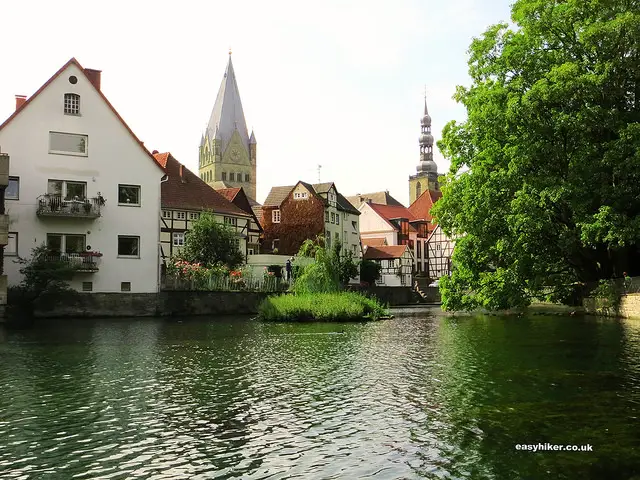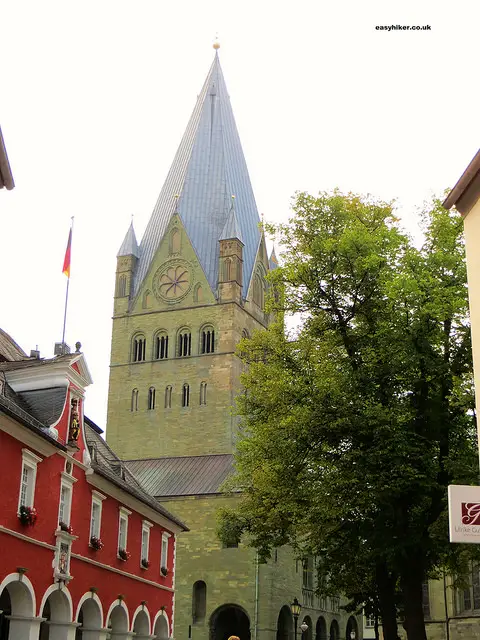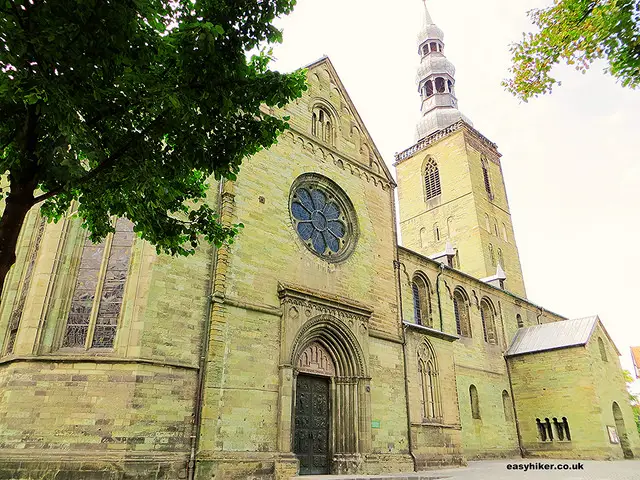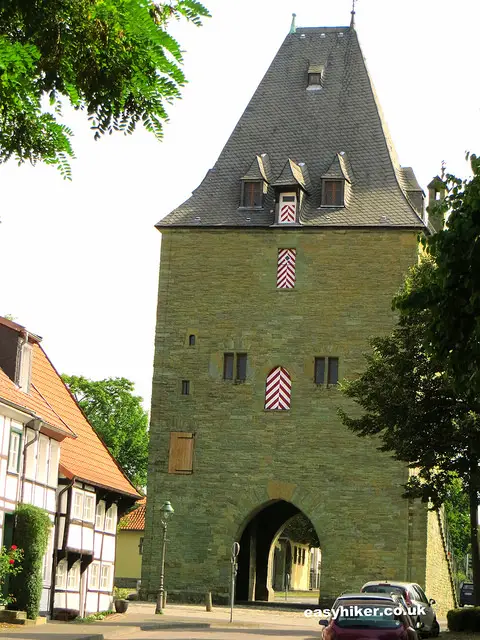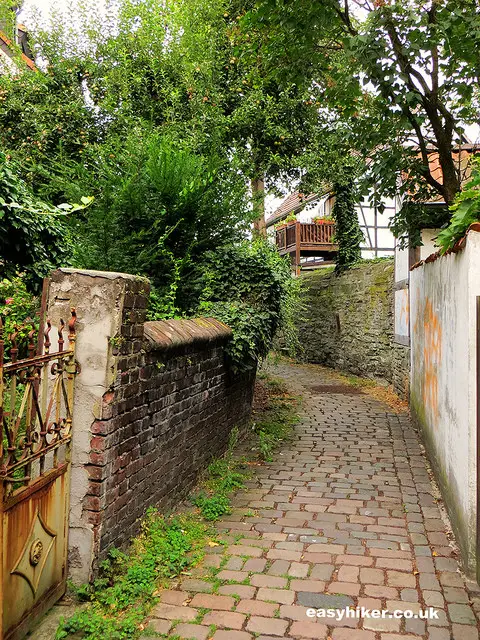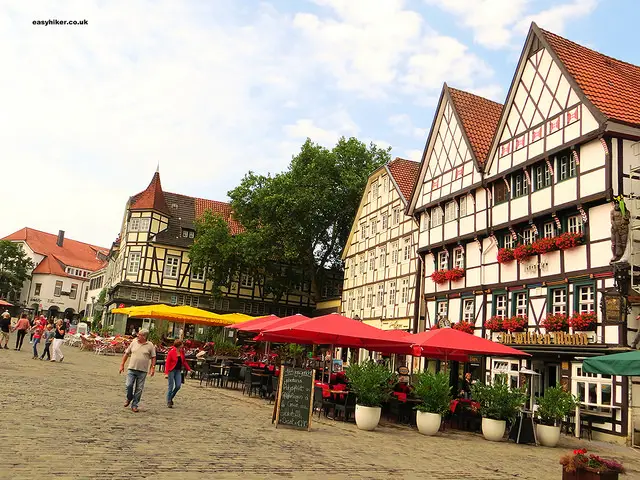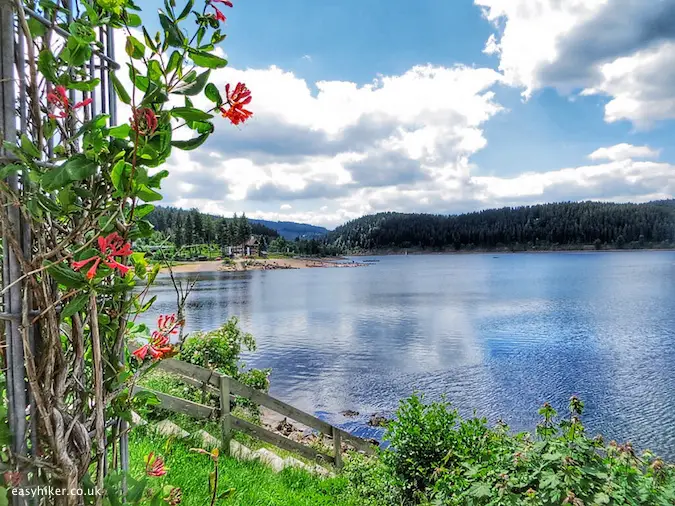… no more, but still a “hiking hub” – and well worth a visit in its own right.
It is still a place that can belong to the list of What to Visit in Germany.
Just before the hiking season gets underway in our part of the world, here is some unfinished business from last year, something I have been wanting to tell you for some time but never got around to writing about because there was always something more timely and urgent on the list of half-finished posts.
So here it is: if you ever go hiking on any of the trails in western Germany – the Rothaarsteig, the Hermannshöhen or the various routes of the Ruhr area – be sure to make the short detour to the town of Soest. You will not regret it.
I don’t know if you have heard of Dunwich on the east Suffolk coast, what is now little more than a hamlet of less than a hundred souls but was once one of England’s mightiest cities – until a series of landslides and violent storms, quite literally, flushed it down the cliffs and into the North Sea.
The nearest German equivalent to this town is Soest – with the difference that it was historical rather than natural catastrophes that did the job for Soest. Which also means that, as a consequence, the buildings are still all there, only the power, the wealth and (most of) the people have gone.
We chanced upon Soest on our walk to the Möhne reservoir. I had heard about it but was still surprised to see how big the Old Town is – particularly if you consider that modern Soest barely counts 30,000 inhabitants.
There are about a dozen medieval churches, some of them fairly huge: the town’s whole population would comfortably fit into the inner city’s churches alone …
… and this is the only remaining tower of the town’s once mighty fortifications – Soest used to have ten city gates like this one. TEN!
So hat happened?
Basically, the town’s rulers repeatedly picked the wrong side in the wars and political struggles of the late Middle Ages, getting it most spectacularly wrong in the Reformation when they decided to turn Protestant in the middle of an otherwise staunchly Catholic region.
Soest lost its rights as a largely independent municipality and, to add insult to injury, its 12th century statue of Madonna and Christ was shipped to the neighbouring town of Werl which quickly became one of West Germany’s main pilgrimage sites, still attracting 300,000 visitors every year.
Soest’s reduced standing turned out to be an advantage in WWII, however, when the town was spared the worst of the RAF’s aerial onslaught. Still, Soest is not without its war wounds, and although a few scars are even visible today, the Old Town is beautifully preserved …
… and there are many small lanes and alleyways that give you a feel for the history of the place.
We were simply not prepared for the riches on offer and had not allocated enough time for a “proper” look around. So we glanced many things only from the bus (such as the church with the leaning tower) when we were already on our way out and only read about the Wiesenkirche church window that depicts a Last Supper where the table for Jesus and his Apostles is decked out with Westphalian specialties such as beer, smoked ham and black pumpernickel bread.
Actually, the Pumpernickel bread was even invented here. At least that’s what the locals claim. That is hotly contested by other towns in the area, as you may imagine, but what is undisputed is that the bakery, which is said to have come up with the recipe, served, until the 17th century, as the official suppliers of the Kings of Bavaria, hundreds of miles to the south: they may not have invented the stuff but sure knew how to market it.
Unfortunately, the bakery has ceased to be, but the house where it once stood still exists, at the far end of Soest’s pretty central market square, where many cafes and restaurants can offer you local specialties for a pleasant end to your visit.

